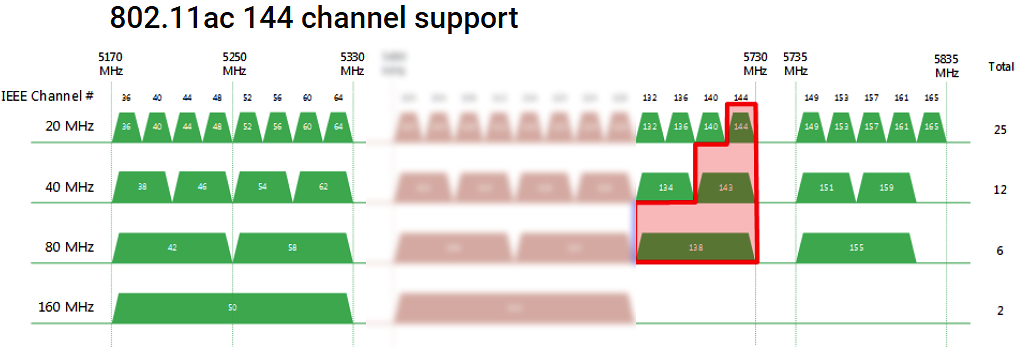There is a feature when using 160 MHz channel width in a 5 GHz Wi-Fi network: when the 160 MHz channel width is enabled, there are only two continuous blocks of channels that you can actually use — these are channels 36 to 64 and 100 to 128 (e.g., available with the Switzerland country code). Since a large channel width implies that the device will occupy the whole block of channels, there is no point in auto-choosing the channel in the Wi-Fi router's network settings.

If the router selects, for example, channel 149, it cannot use a continuous channel block, and the router switches to 80-plus-80 mode by taking two blocks of channels from different parts of the spectrum. Not all clients can use this mode efficiently.
Tip
If you do not have a 160 MHz device, you should better exclude the use of this width and set the value to 20/40/80. If you need to use a 160 MHz width, manually set the channel number to 36, as this width implies that the client covers the whole 36-64 channel block.
There is also a nuance in using channel 144 in the 5 GHz band: not all devices support it, so it is excluded from the router's auto channel selection.
If the device cannot see the narrow channel 144 (20 MHz), it will also not see the wider channel blocks (40 MHz, 80 MHz) that include this 144 channel.

Channel 144 with 20 MHz width was previously added to the official IEEE 802.11ac (Wi-Fi 5) standard specification. Support for a wide range of 132-144 channels (40 MHz, 80 MHz) was later added to the standard. But most outdated 802.11a and 802.11n clients do not support channel 144. These clients will use 20 MHz width for 132, 136, 140 channels (for 802.11n 5 GHz), and 40 MHz width for 132 + 136 channels' block.
Currently, many devices comply with the old FCC specifications and cannot work with the 144 channel. Channels 144 (20 MHz), 143 (40 MHz), and 138 (80 MHz) frequently cannot be used.
We also recommend that you read the 'Your mobile device can't see 5 GHz Wi-Fi network?' guide.